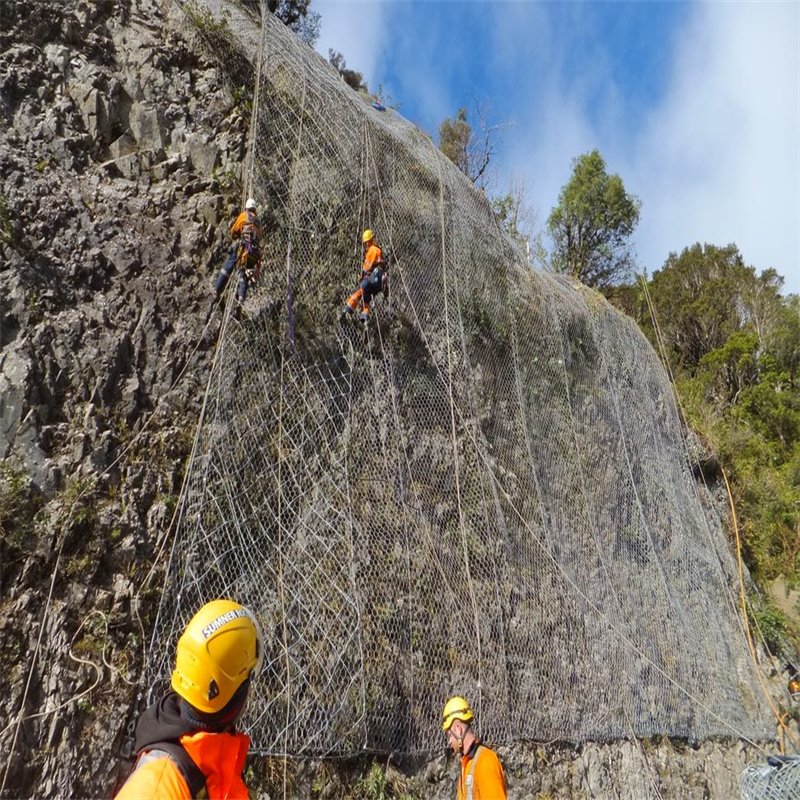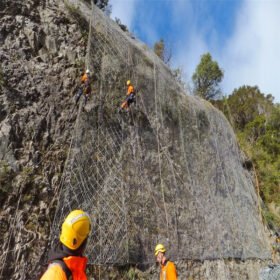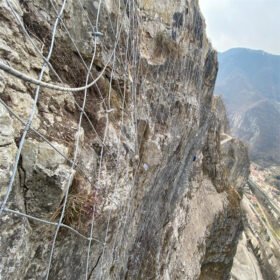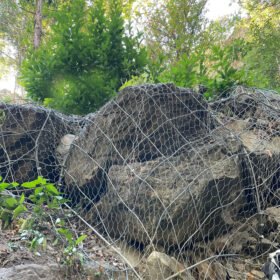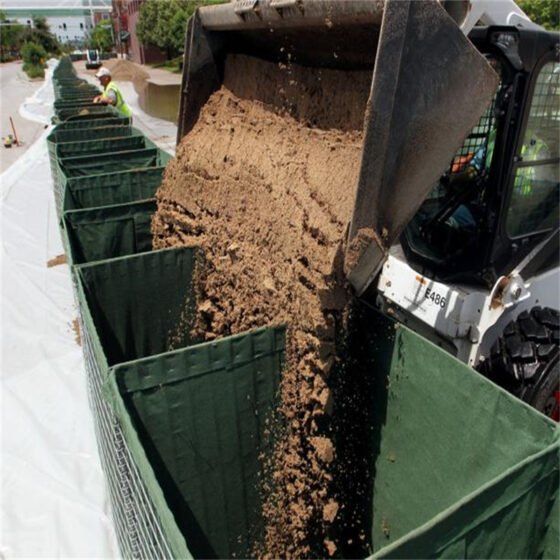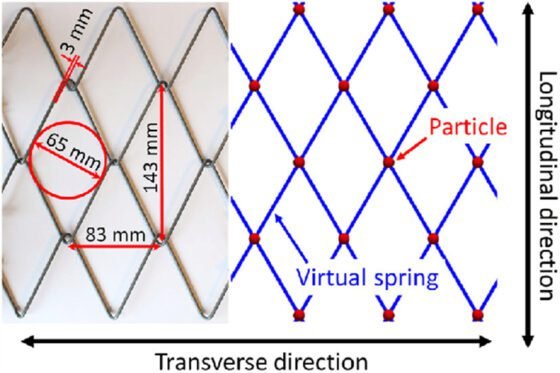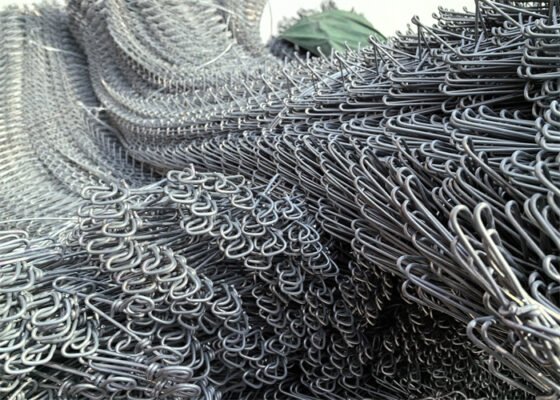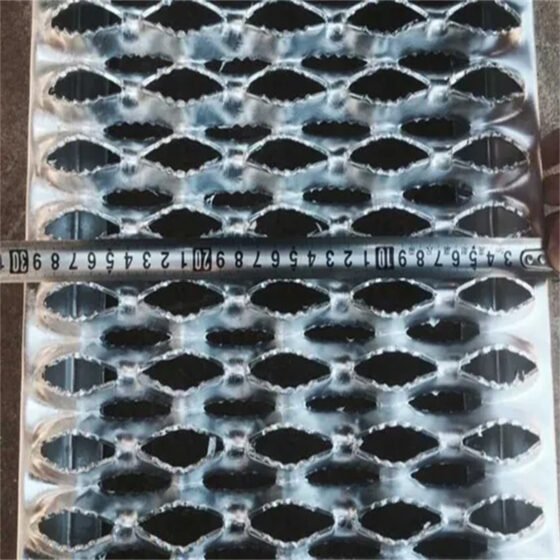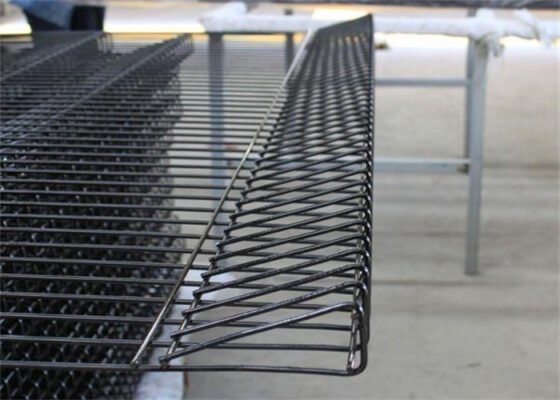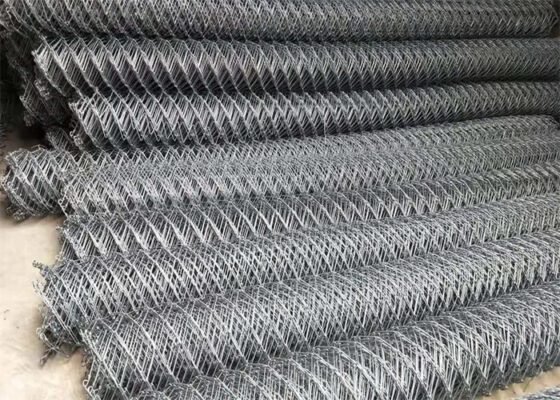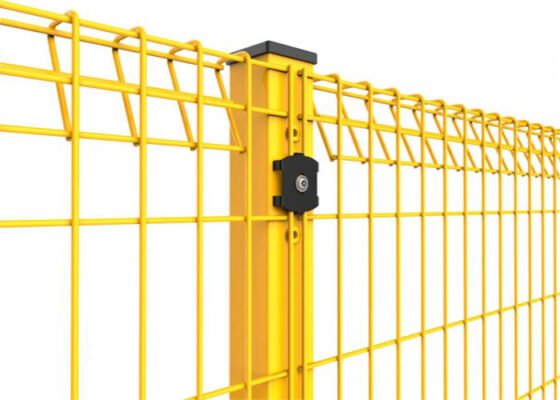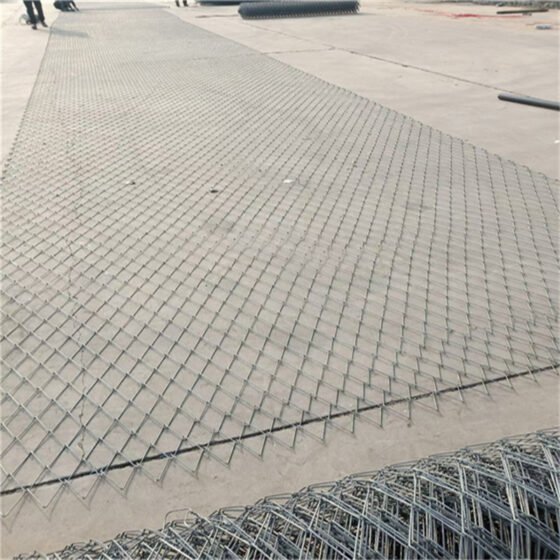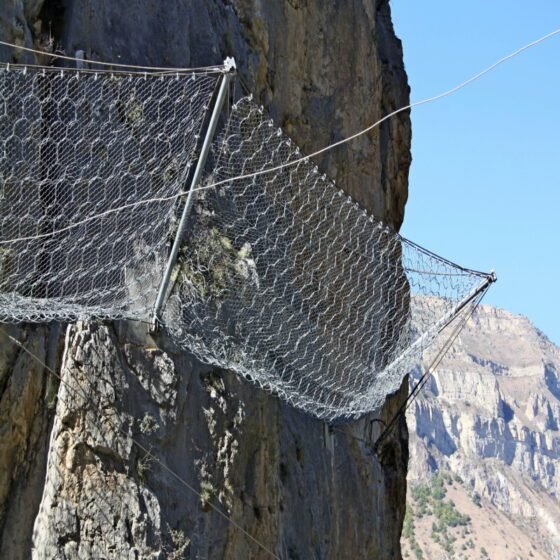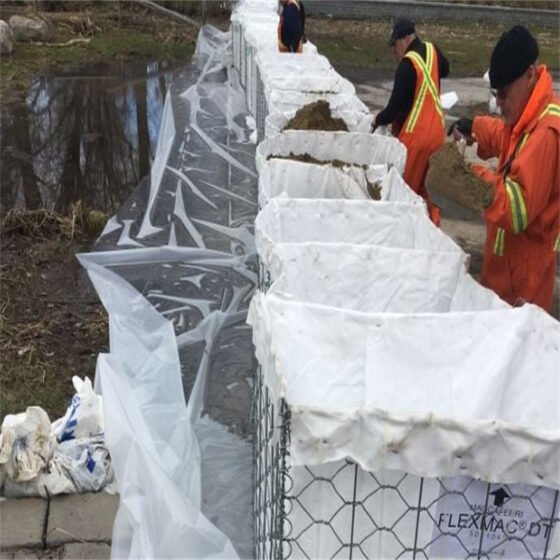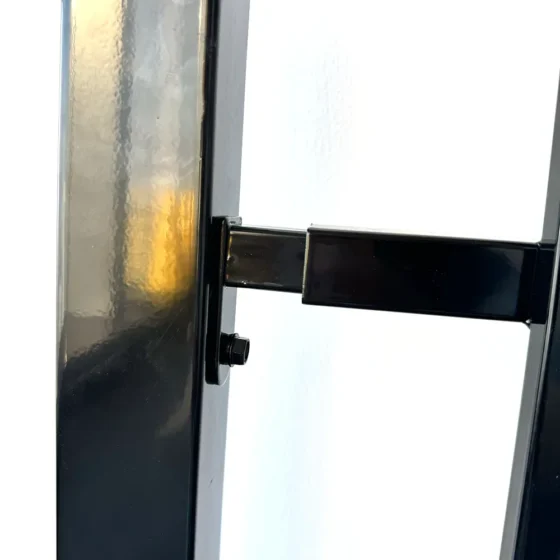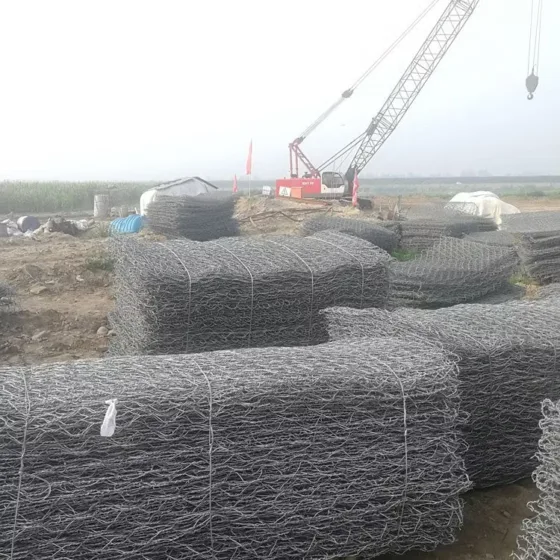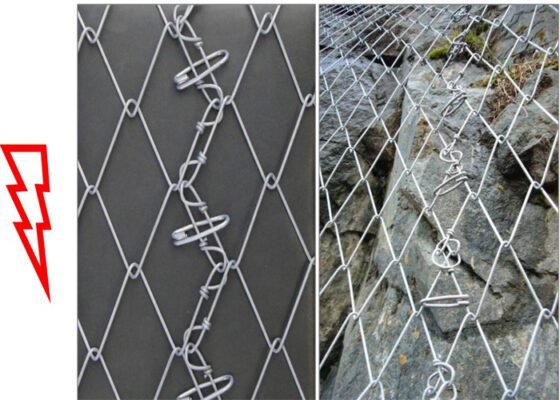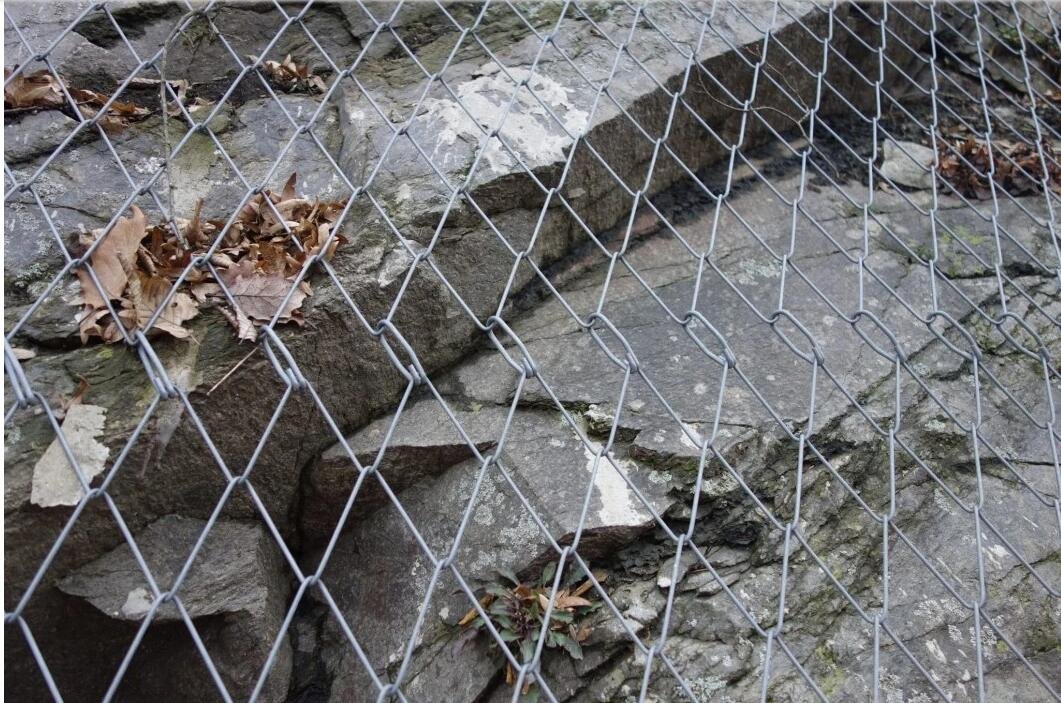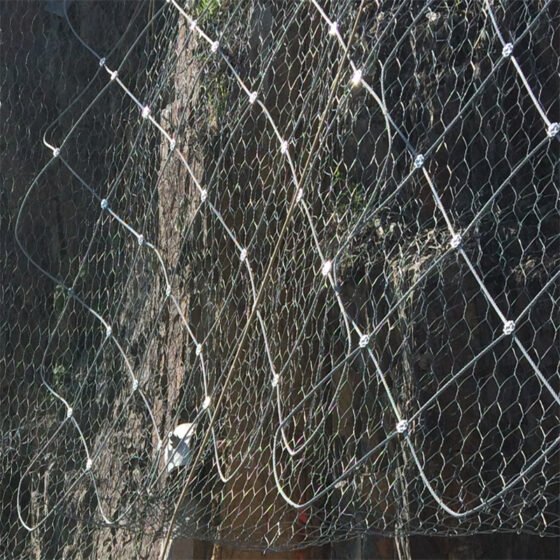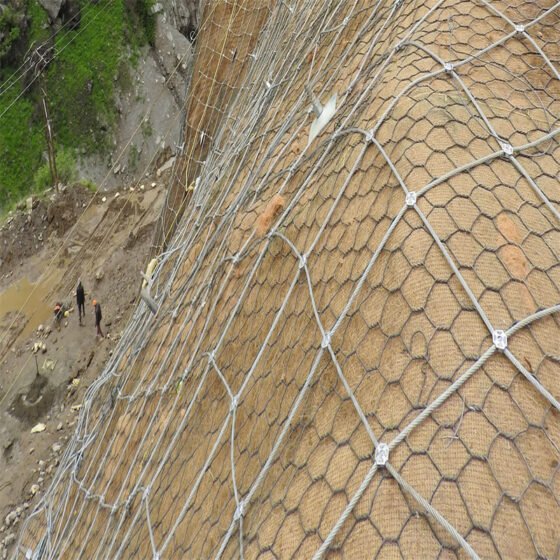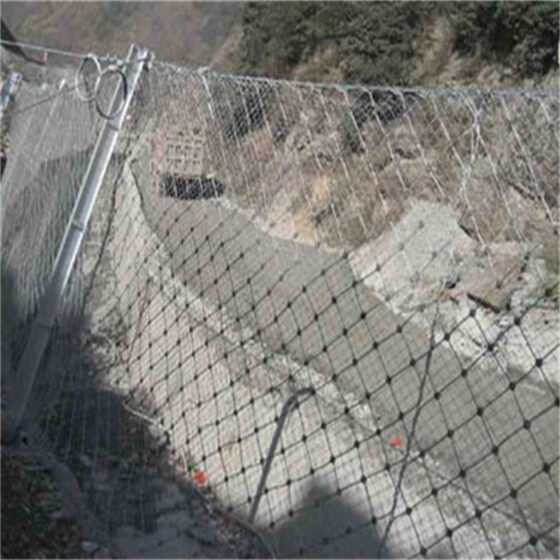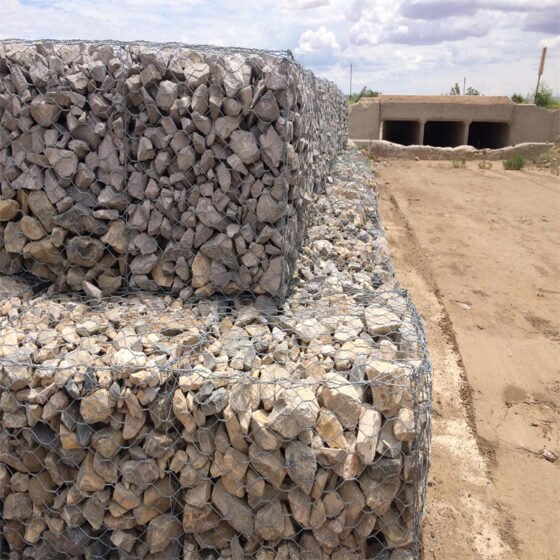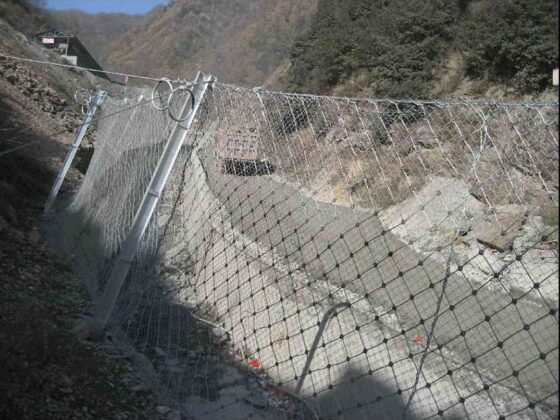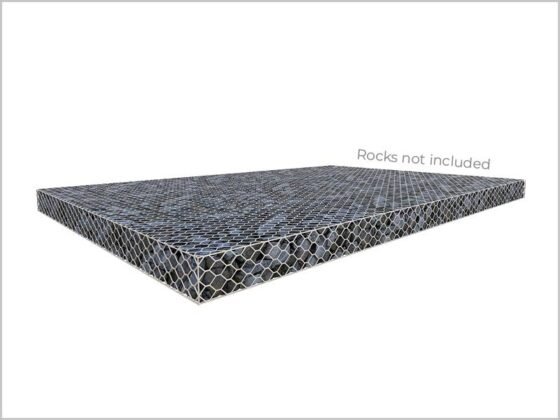In the realm of geotechnical engineering and infrastructure protection, mitigating natural hazards such as rockfalls is critical for safety and economic stability. HEA (High Energy Absorption) panels, developed by BMP, stand out as a leading solution in the field of rockfall mitigation systems. These panels are designed to offer superior protection by absorbing and dissipating the energy from falling rocks and debris, thereby safeguarding roads, railways, and infrastructure networks against potential damages and disruptions.
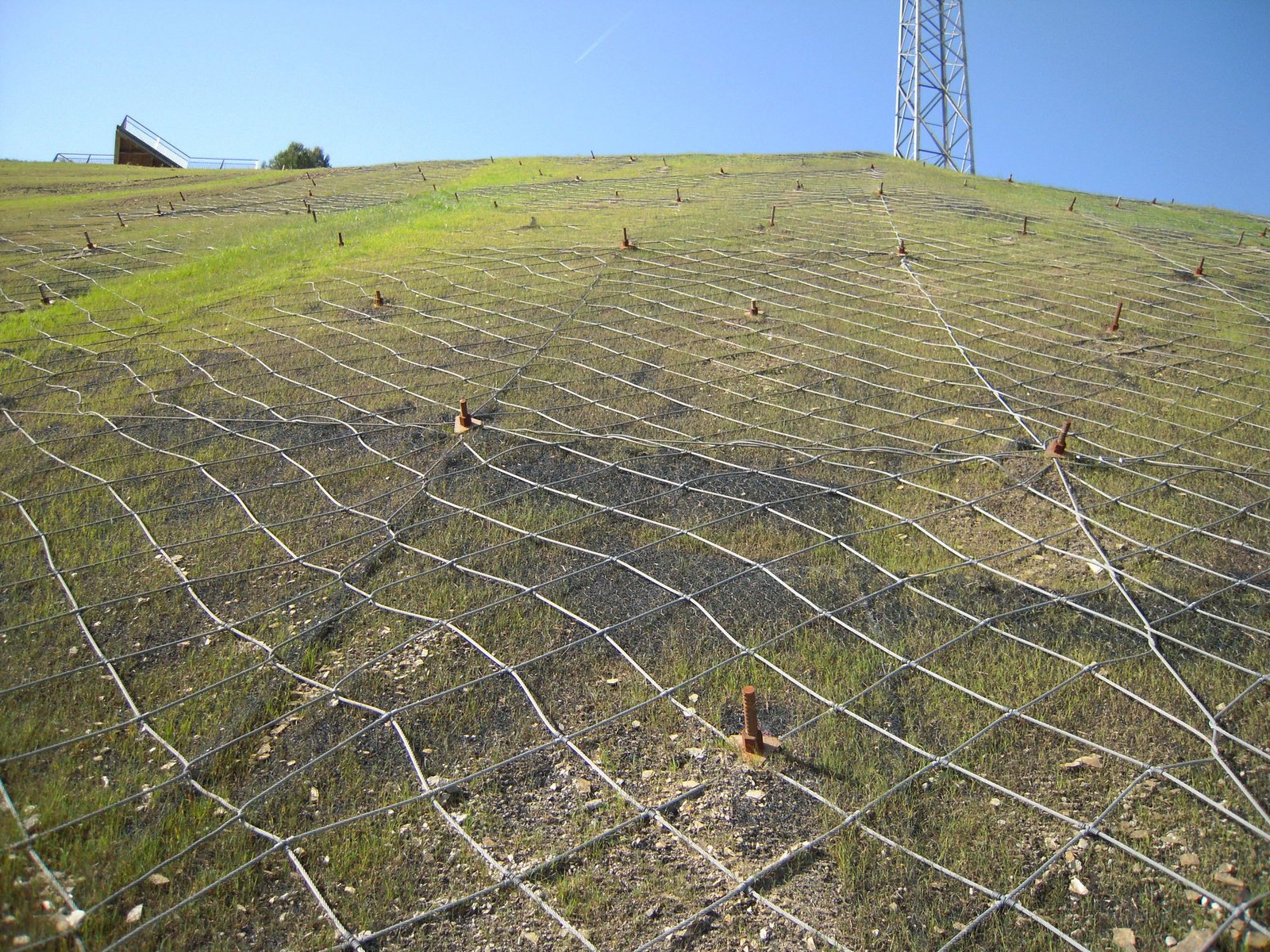
Design and Composition of HEA Panels
HEA Panels use a mix of strong steel wires and a special double-knot system that boosts their structural strength. Workers make each panel from a single length of high-tensile steel wire rope. At each point where the wires cross, they secure it with Maccaferri’s patented HEA ‘double knot’ connection. This method keeps the panels strong and minimizes bending when under pressure, providing solid protection from rock impacts.
The panels consist of square meshes that are very strong and tear-resistant. They make these meshes from steel wires coated with a Zinc-Aluminium-5% mischmetal alloy, which helps the panels resist corrosion and last longer. Thanks to their sturdy build, the panels can handle tough environmental conditions, making them a good choice for different places around the world.
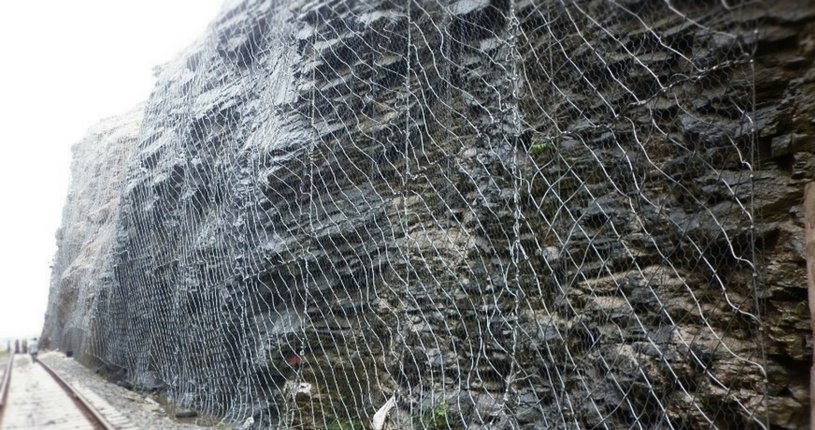
Technical Specifications and Performance
HEA Panels are available in various mesh sizes (250×250, 300×300, and 400×400 mm) and can be customized in dimensions up to 5 meters in height and 10 meters in length, catering to specific project needs. The panels boast impressive structural properties, with a maximum breaking load of 24.4 kN and a resistance to tearing of 24.4 kN, indicative of their ability to handle significant forces.
The panels’ design facilitates effective load transfer to anchoring systems, ensuring stability and security even in challenging installations. This feature is particularly beneficial in secured drapery applications where low deflection and high strength are required.
Table 1: Standard HEA Panels Dimensions
| Specification | Value |
|---|---|
| Nominal Mesh Size (mm) | 250×250, 300×300, 400×400 |
| Panel Height – H – (m) | Up to 5 |
| Panel Length – L – (m) | Up to 10 |
Note: External HEA Panels size is nominal with a tolerance of ±5%.
Table 2: Knot – Blinding Bars
| Specification | Details |
|---|---|
| Material Coating | Steel coated with Galfan |
| Standard | EN 10244, Classe A |
| Diameter (mm) | Ø = 3 (UNI EN 10218) |
| Breaking Load (N/mm²) | 380 – 500 |
Table 3: Knot – Tear Resistance
| Specification | Value |
|---|---|
| Maximum Breaking Load (kN) | 24.4 |
Table 1: Wrapping Rope Specifications
| Specification | 8 mm Diameter | 10-12 mm Diameter |
|---|---|---|
| Rope Type | 6×7+ WC | 6×19+ WC |
| Zinc Coating | Class B | Class A |
| Rope Grade | 1770 N/mm² | 1770 N/mm² |
Table 2: Perimetral Rope Specifications (Optional)
| Specification | 10-12 mm Diameter | 14-16 mm Diameter |
|---|---|---|
| Rope Type | 6×19+ WC | 6×19+ WC |
| Zinc Coating | Class B | Class A |
| Rope Grade | 1770 N/mm² | 1770 N/mm² |
Applications and Benefits HEA Panels
HEA Panels are utilized in a variety of settings, including:
- Rockfall Barriers: They provide effective containment of falling rocks, preventing them from reaching roads or railway tracks.
- Secured Drapery: The panels can be installed as a form of secured drapery on unstable rock faces, where they help stabilize the surface and prevent debris from falling.
- Infrastructure Protection: HEA Panels are ideal for protecting infrastructure in mountainous or rocky terrains where rockfalls are a common threat.
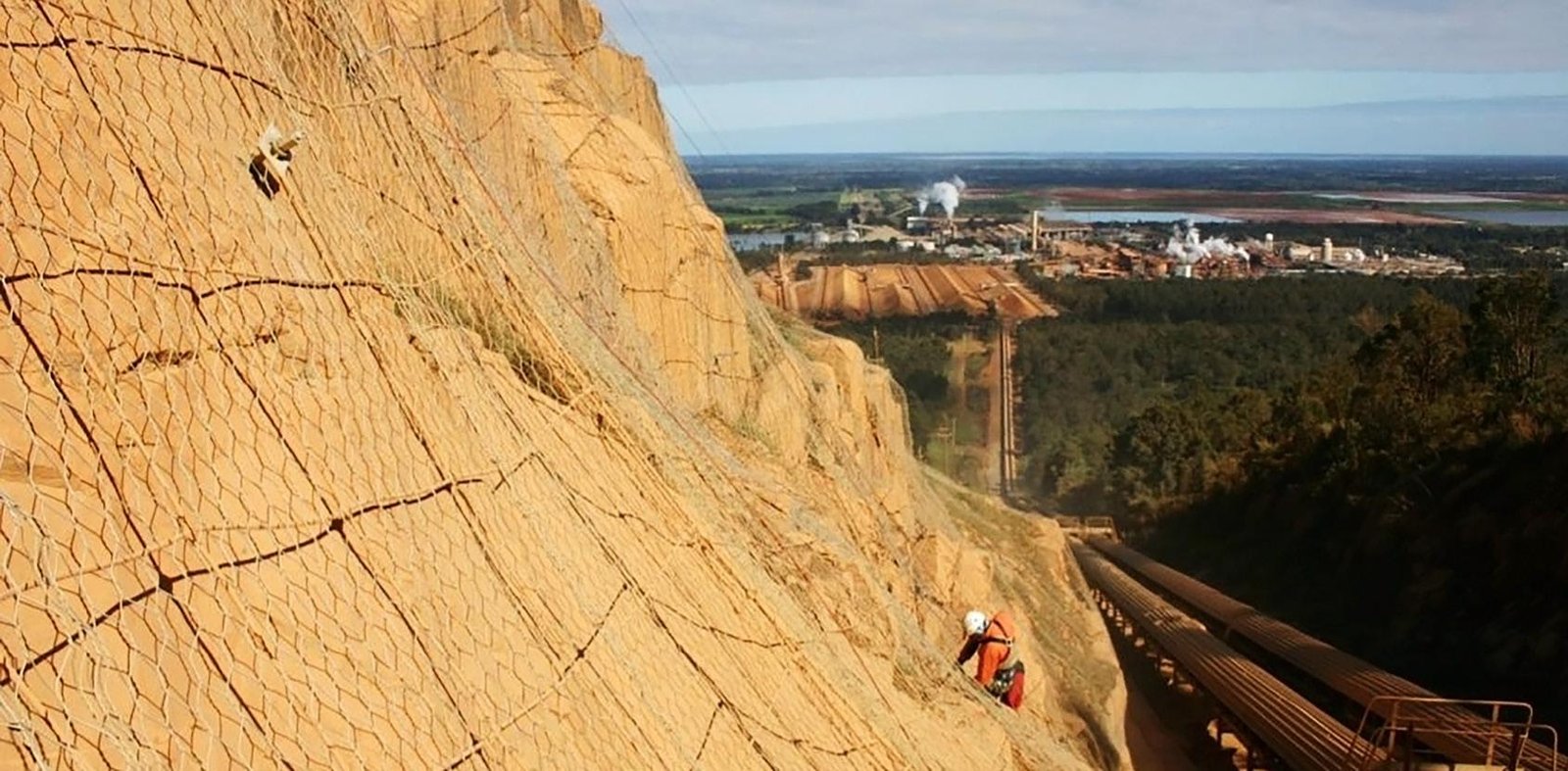
The benefits of using HEA Panels in rockfall mitigation include:
- High Energy Absorption: Their ability to absorb and dissipate high energy impacts from rockfalls makes them a critical component in safety measures.
- Durability and Low Maintenance: Thanks to their robust construction and corrosion-resistant materials, HEA Panels require minimal maintenance, reducing long-term costs.
- Customizability: The flexibility in size and the ability to tailor the panels to specific project requirements make them a versatile option for many applications.
How to Obtain a Quote for HEA Panels: A Step-by-Step Guide
When planning to incorporate HEA (High Energy Absorption) panels into a project, obtaining a detailed and accurate quote is a crucial step. These panels, known for their robust construction and superior protection against rockfalls and other debris, require specific information to ensure that the quotation meets your project’s unique needs. Here’s a step-by-step guide on how to get a quote for HEA panels, ensuring you provide all necessary details to the supplier.
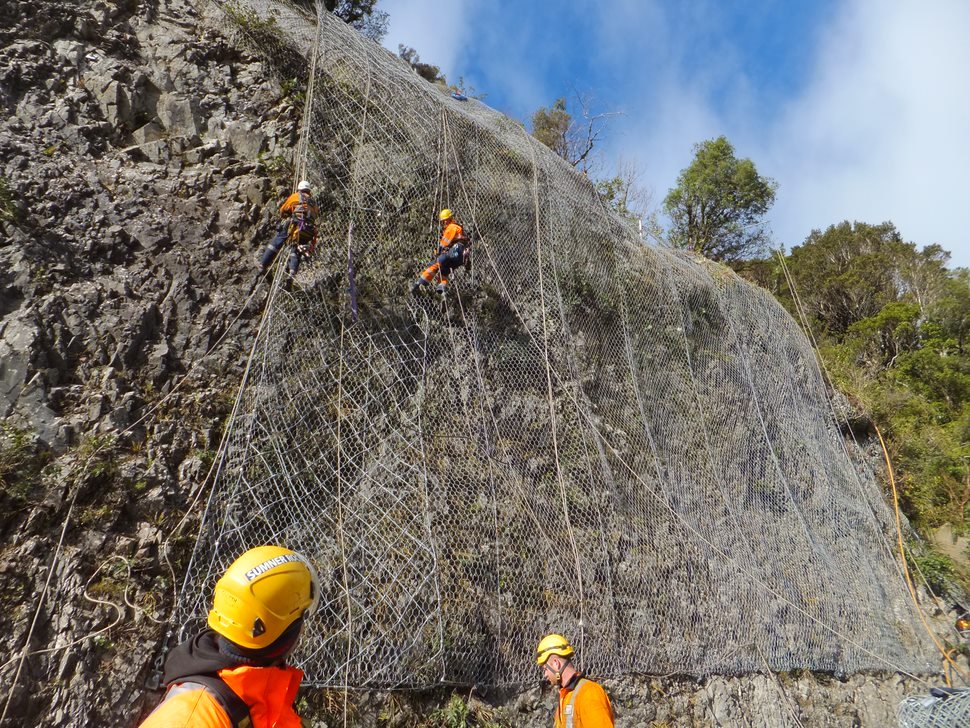
Step 1: Determine Your Panel Requirements
Before contacting a supplier, you must determine the specific requirements of your project. This includes the number of panels you need and the specific conditions they will address. Consider factors like the area of coverage, the nature of the terrain, and the level of exposure to natural elements.
Step 2: Specify the Panel Size
Each HEA panel can be customized to fit specific dimensions. When requesting a quote, you need to provide the height and length of each panel you require, typically measured in meters (m). This dimension will directly affect the total area covered and the material usage, influencing the cost.
HEA Panels Example Specification:
- Panel Size: Specify as height x length in meters (e.g., 6m x 3m).
Step 3: Choose the Mesh Size
The mesh size will determine the granularity of the barrier against smaller or larger rocks. It is crucial to select a mesh size that suits the environmental conditions and the type of debris expected. Mesh sizes are usually specified in millimeters (mm).
Example Specification:
- Mesh Size: 300×300 mm, 400×400 mm, etc.
Step 4: Select the Wrapping Rope Diameter
The diameter of the wrapping rope adds to the strength and durability of the panels. The choice of diameter often depends on the expected impact energy from rockfalls. Specify the diameter in millimeters (mm).
Example Specification:
- Wrapping Rope Diameter: 8mm, 10mm, etc.
Step 5: Include Edge Rope Specifications
If your design requires additional support at the edges of the panels, specify the diameter of the edge rope. This detail is crucial for enhancing the perimeter strength of the installed panels.
Example Specification:
- Edge Rope Diameter: 12mm (if needed).
Step 6: Specify the Zinc Coating Class
Zinc coating on the ropes enhances their durability and resistance to corrosion, which is vital in harsh environmental conditions. Specify whether you require Class A or Class B zinc coating, with Class A offering higher resistance.
Example Specification:
- Zinc Coating: Class A or Class B.
Step 7: Compile and Send Your Request
Once you have gathered all the necessary specifications, compile them into a clear request format. It is helpful to include any additional requirements or project details that might influence the quote.
HEA Panels Example Quote Request:
- Number of Panels: 30 HEA Panels
- Panel Size: 6m x 3m
- Mesh Size: 300×300 mm
- Wrapping Rope Diameter: 8mm
- Edge Rope Diameter: 12mm
- Zinc Coating: Class B
HEA Panels Example 2:
- Number of Panels: 60 HEA Panels
- Panel Size: 5m x 4m
- Mesh Size: 400×400 mm
- Wrapping Rope Diameter: 10mm
- Edge Rope Diameter: None
- Zinc Coating: Class A
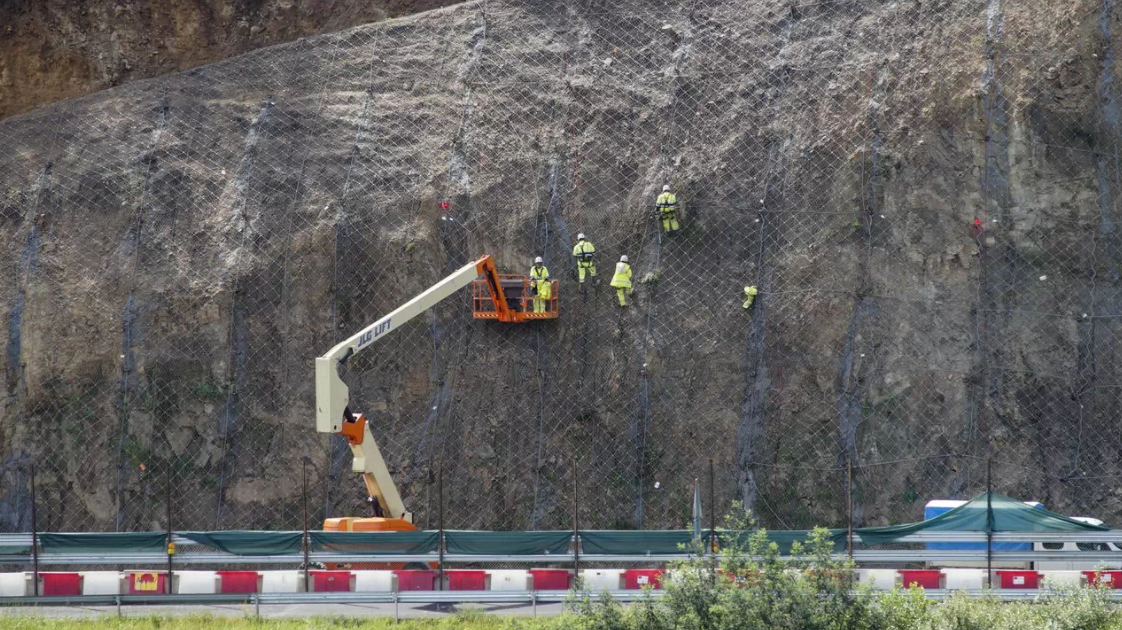
Benefits
- High Durability: HEA panels feature steel wires coated with a Zinc-Aluminium-5% mischmetal alloy, which makes them highly resistant to corrosion. This ensures they last longer even in harsh environments.
- Strong Structural Integrity: The panels use high-tensile strength steel wire rope and a unique double knot connection at each crossing point. This design keeps the panels strong and prevents them from bending under pressure, providing reliable protection against rock impacts.
- Tear Resistance: The square mesh design of HEA panels is extremely durable and resistant to tearing. This quality ensures that they effectively contain debris and prevent rockfalls.
- Versatility: Their sturdy build makes HEA panels suitable for various locations, from salty coastal areas to rugged mountainous regions.
- Low Maintenance: Thanks to their corrosion-resistant coating and robust mesh design, HEA panels require little upkeep. This makes them a cost-effective solution for long-term use.
- Easy Installation: Despite their durability, HEA panels are designed for easy installation. This reduces both labor costs and the time needed to set them up.

Applications
- Rockfall Barriers: HEA panels are ideal for protecting roads, railways, and buildings from falling rocks and debris. They absorb and dissipate the energy from falling rocks, minimizing damage and enhancing safety.
- Slope Stabilization: In areas prone to landslides or erosion, you can use HEA panels to stabilize slopes and prevent the loss of soil or rocks. This protects nearby structures and passageways.
- Mining Operations: In mining settings, HEA panels secure excavation sites and waste rock piles. They keep rockfalls in check, ensuring safety for workers.
- Construction Sites: During construction, especially on unstable land or in areas requiring blasting, HEA panels provide protection against rockfalls and debris flow.
- Coastal Protection: Along coastlines, HEA panels help stabilize cliffs to prevent rocks from falling onto beaches or coastal roads, especially in high-erosion areas.
- Environmental Conservation Areas: In natural parks or protected areas, HEA panels help minimize environmental impact. They secure unstable rock faces without extensive construction, preserving the natural landscape.
Conclusion
BMP’s HEA Panels represent a significant advancement in rockfall protection technology. Their innovative design, combined with superior materials and engineering, offers an effective solution for managing natural hazards. By incorporating HEA Panels into their safety systems, project managers can significantly enhance the protection of people, property, and infrastructure against the dangers of rockfalls and other related natural events.
 BMP Slope Protection
BMP Slope Protection
